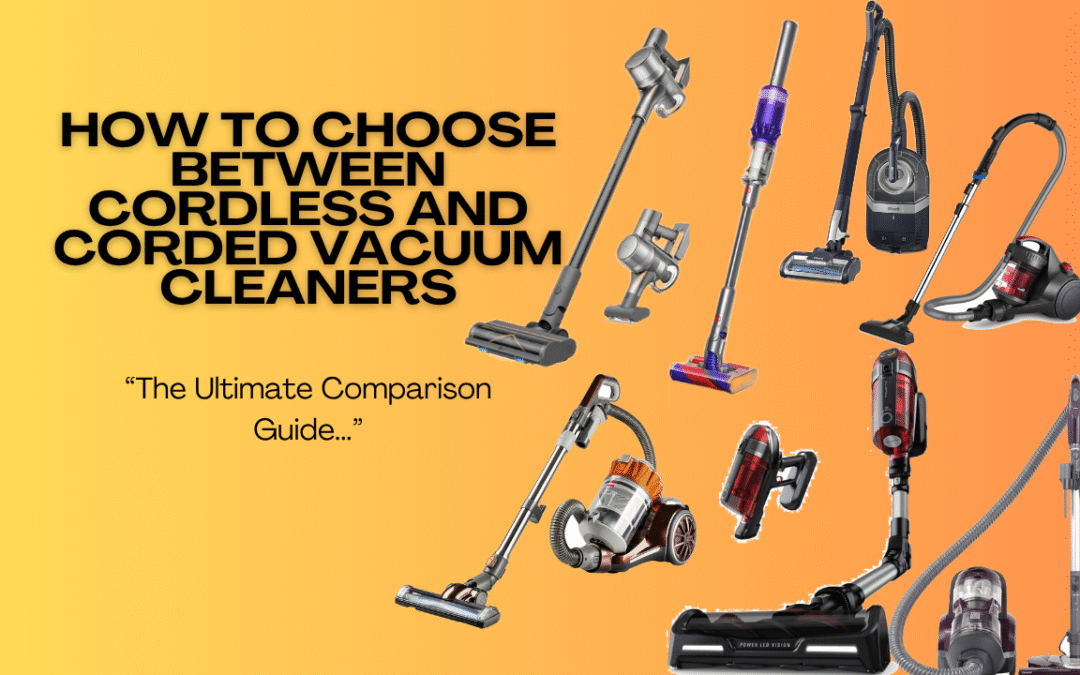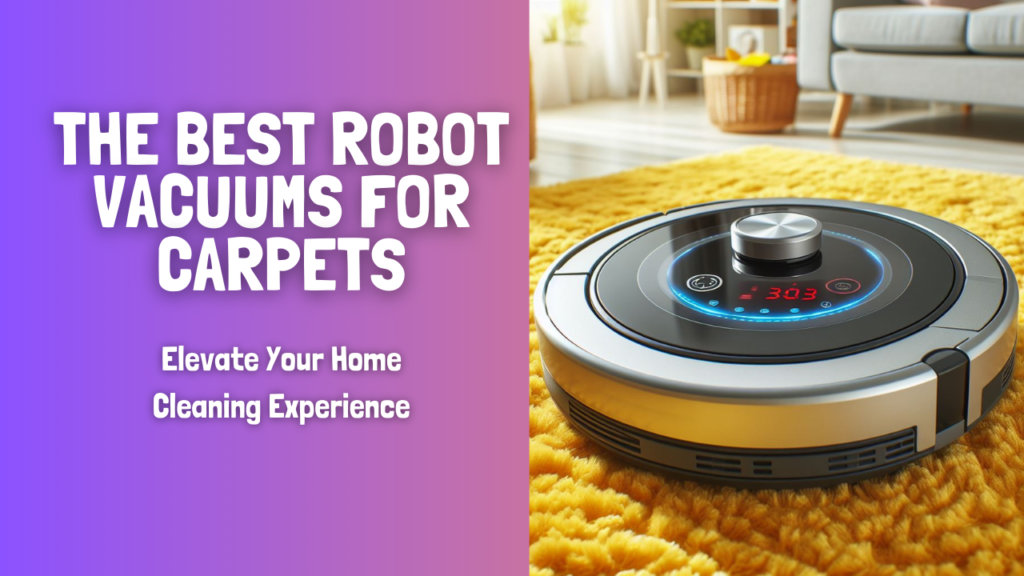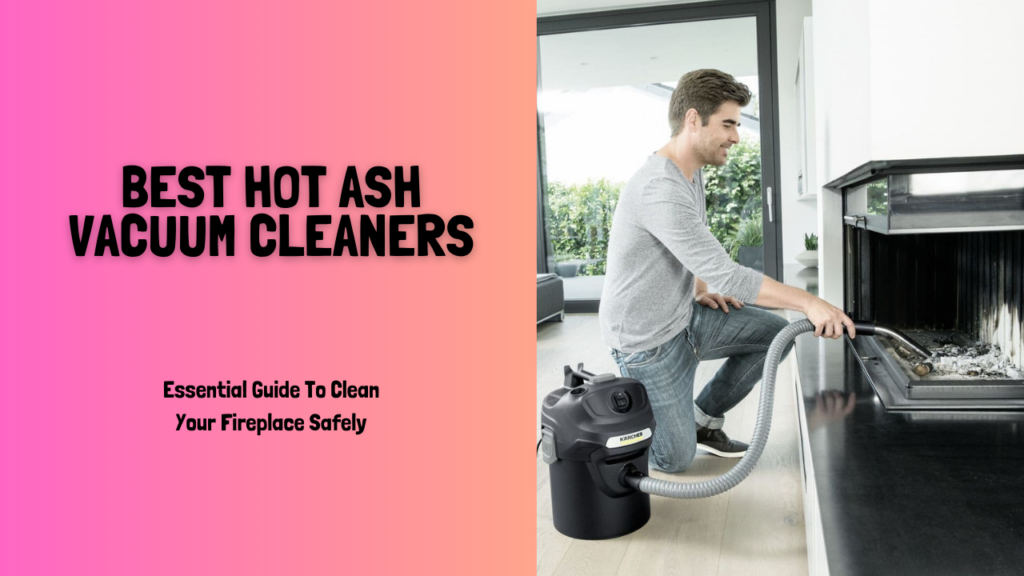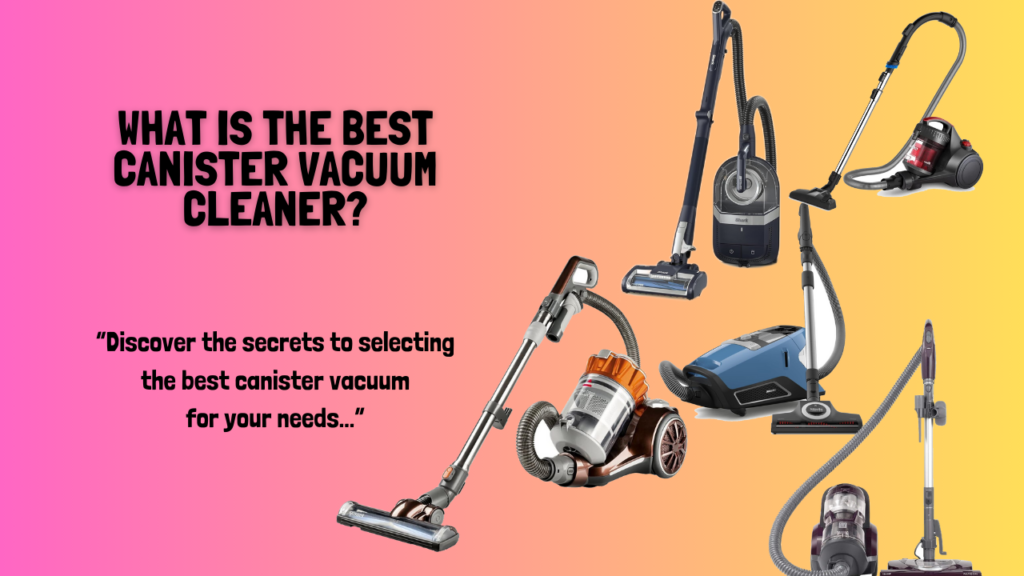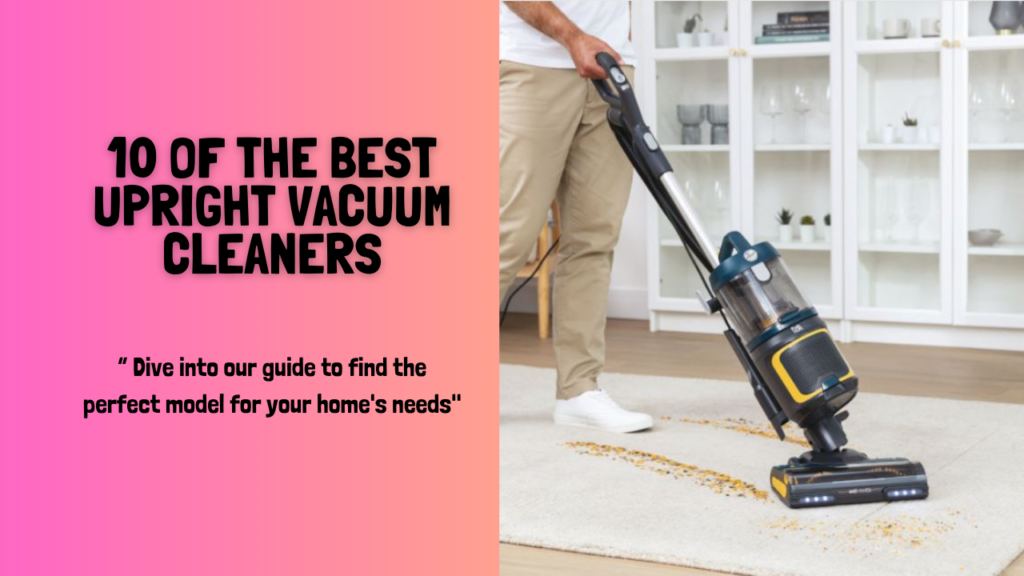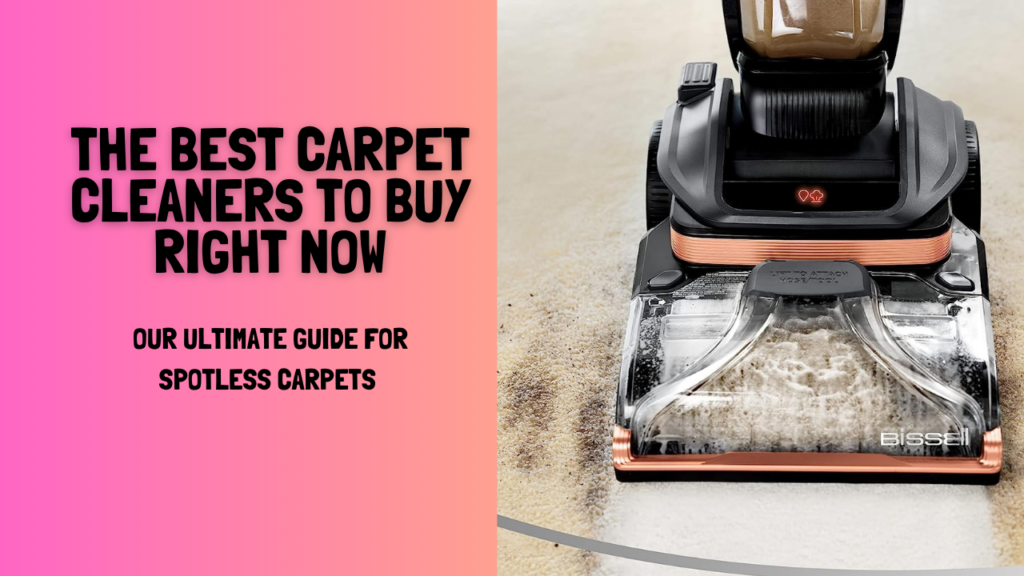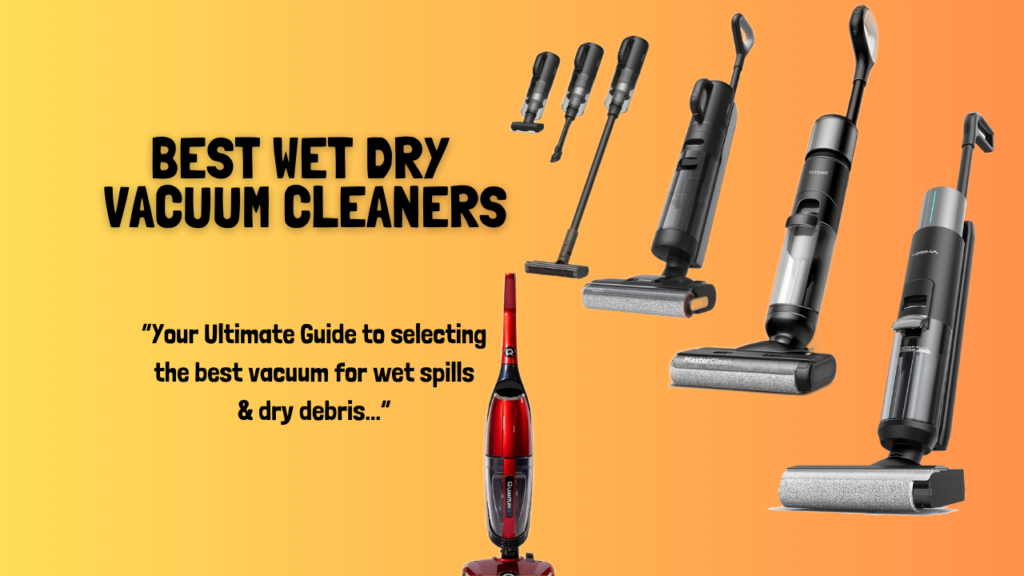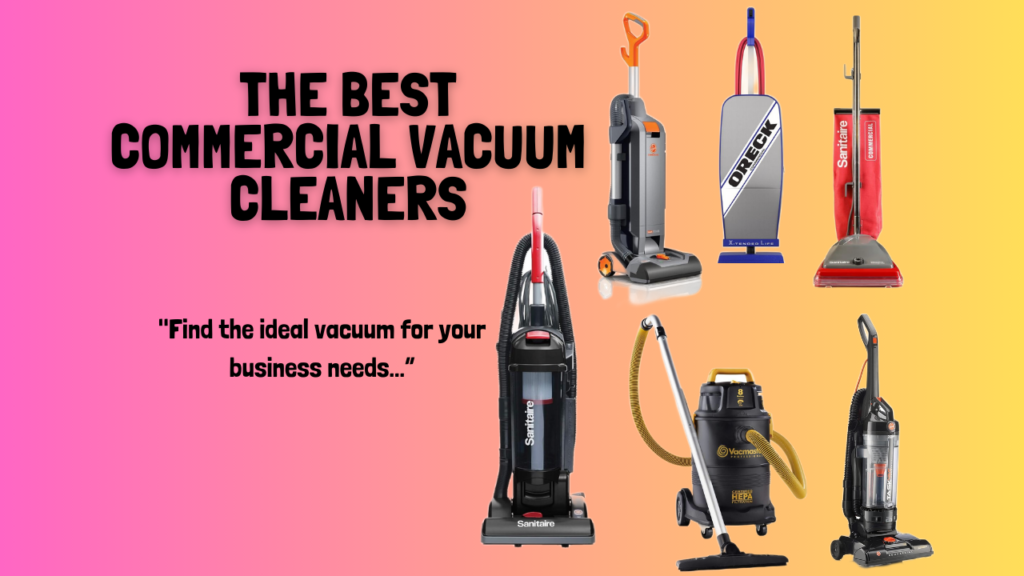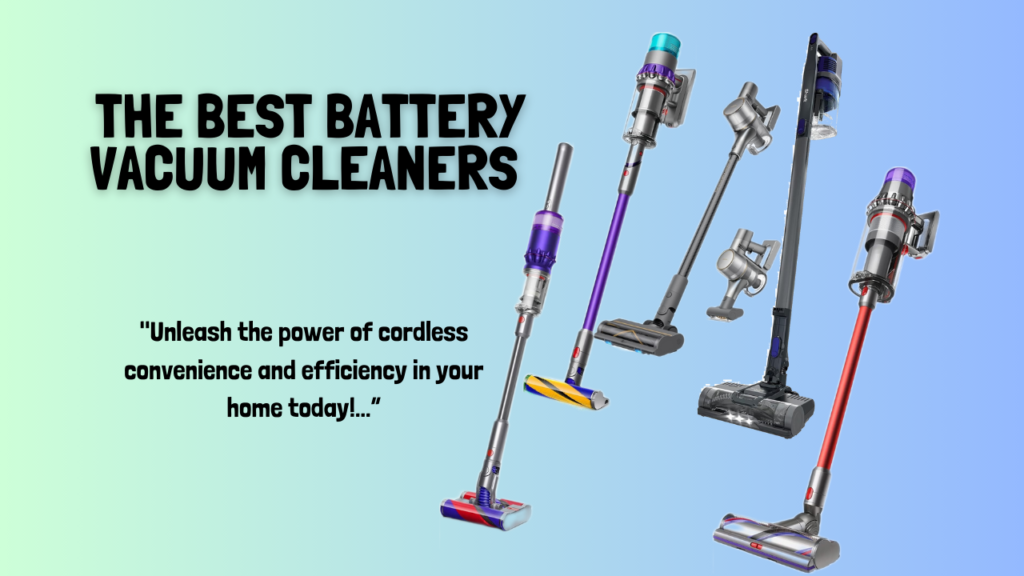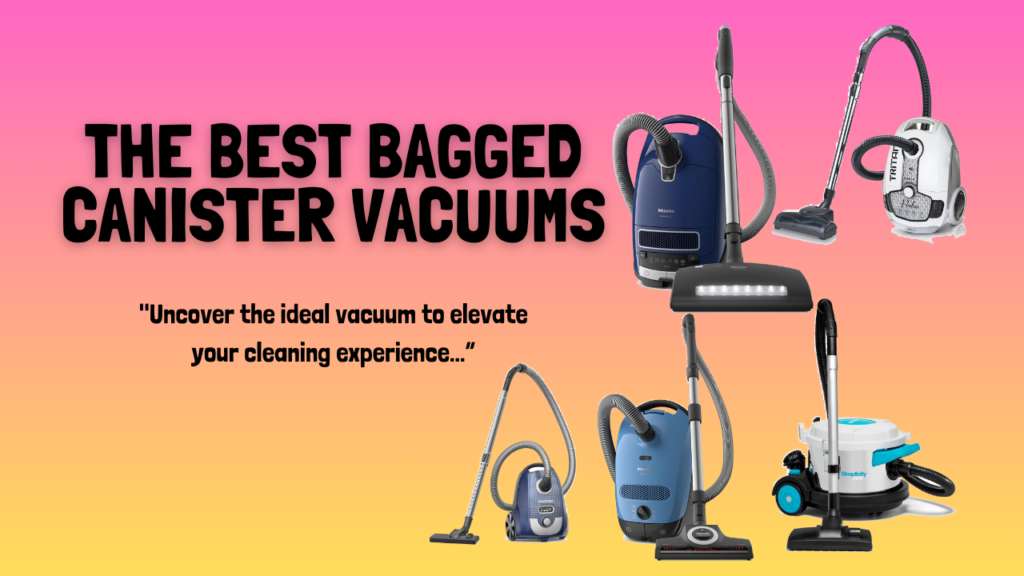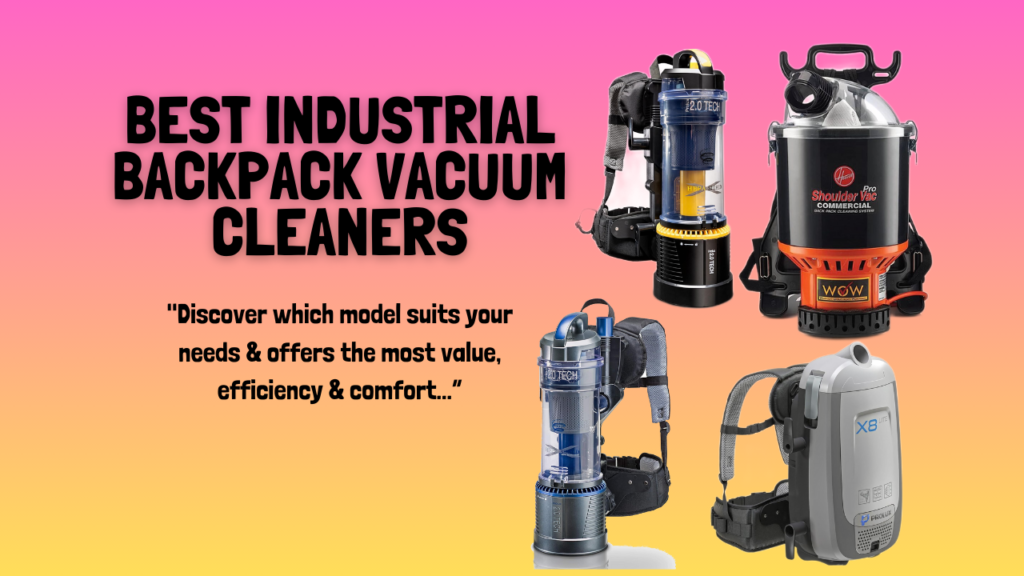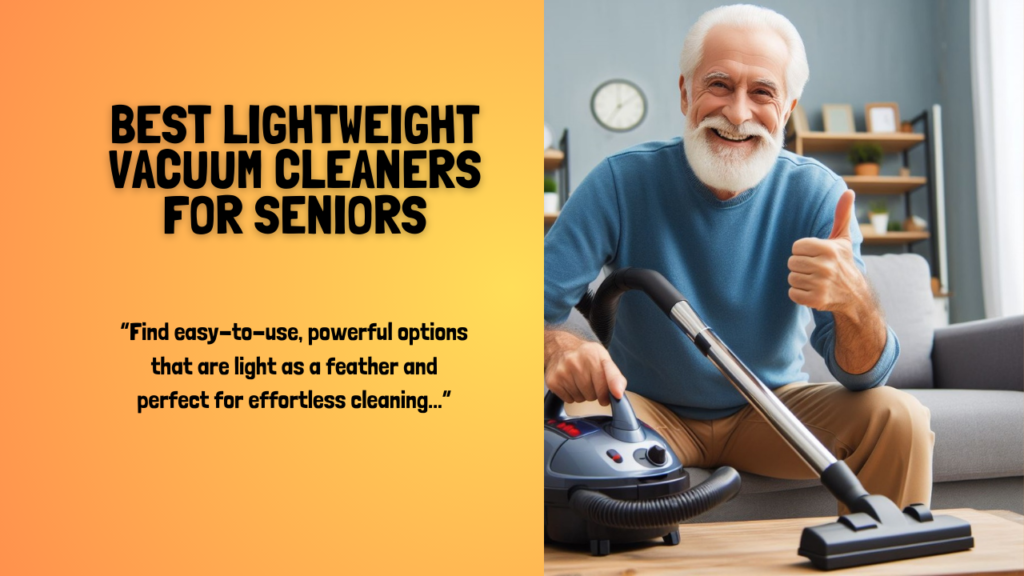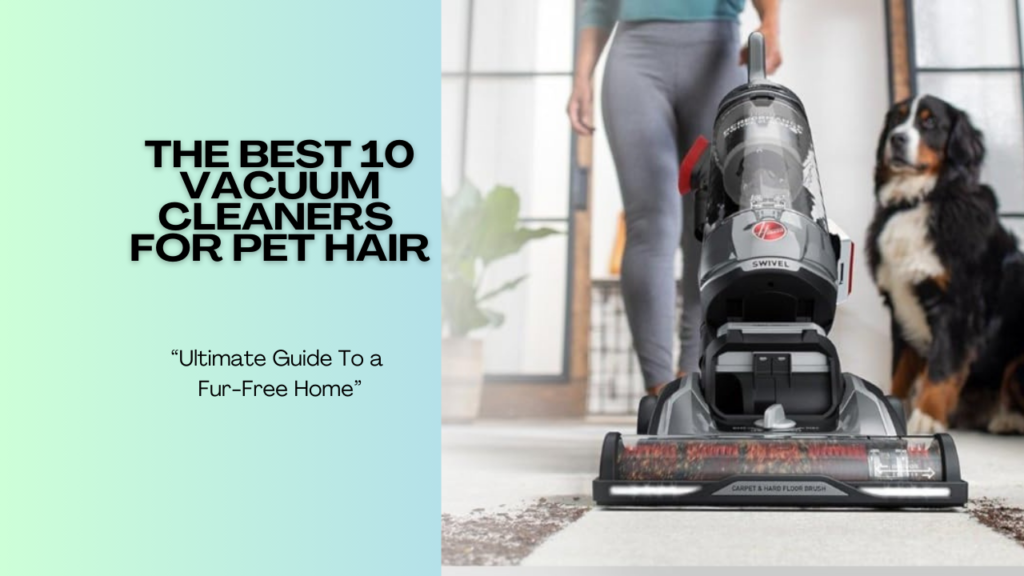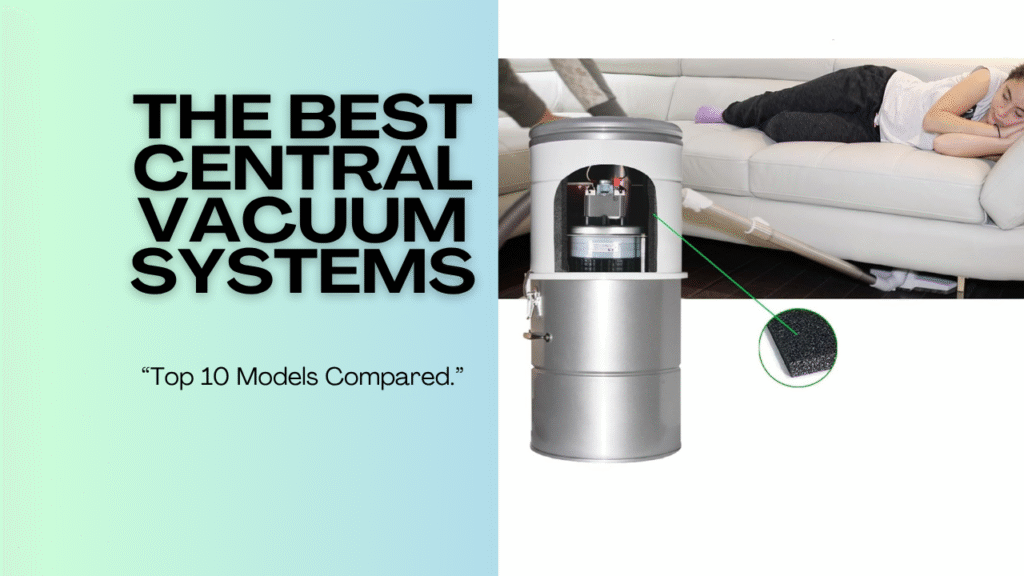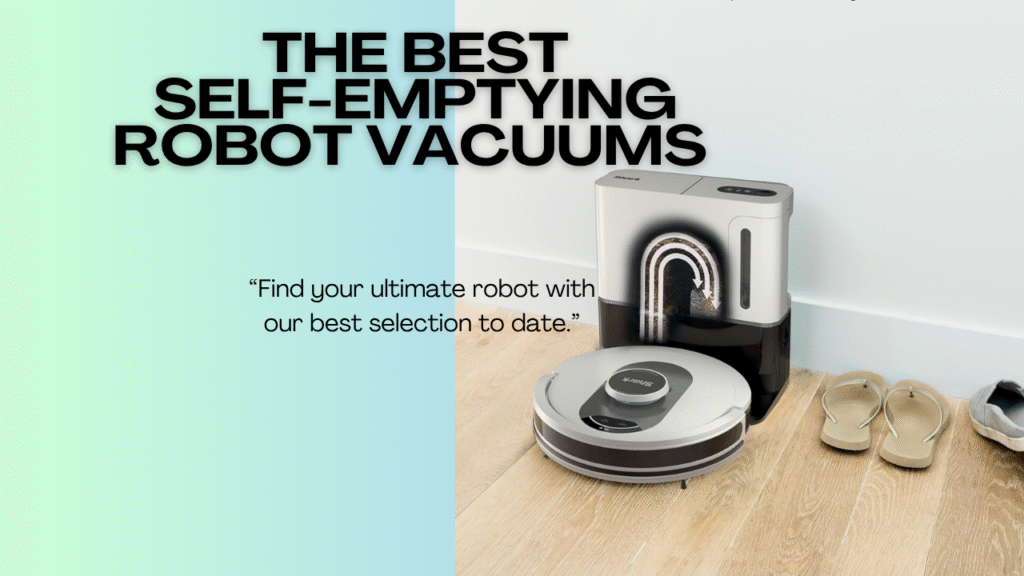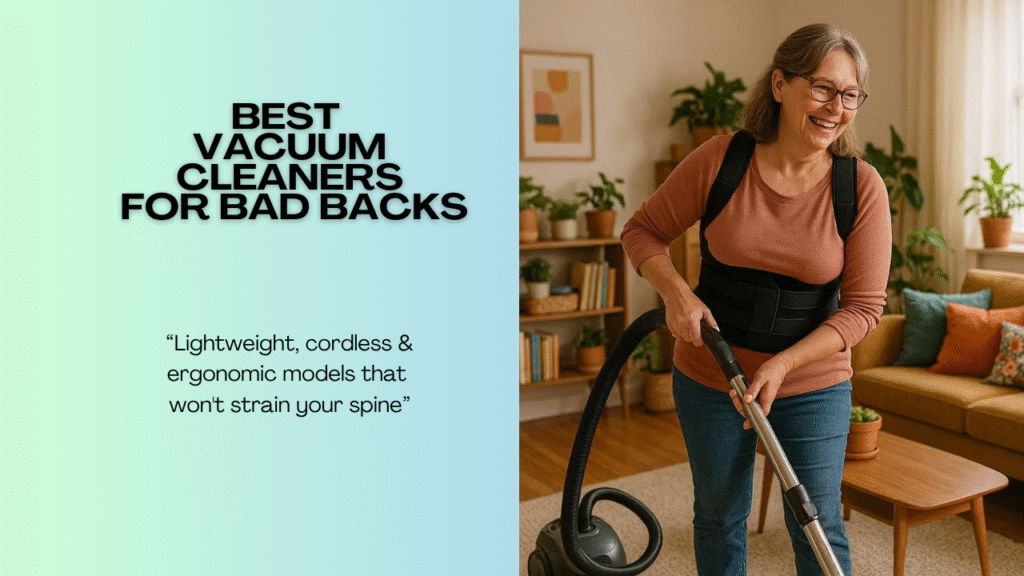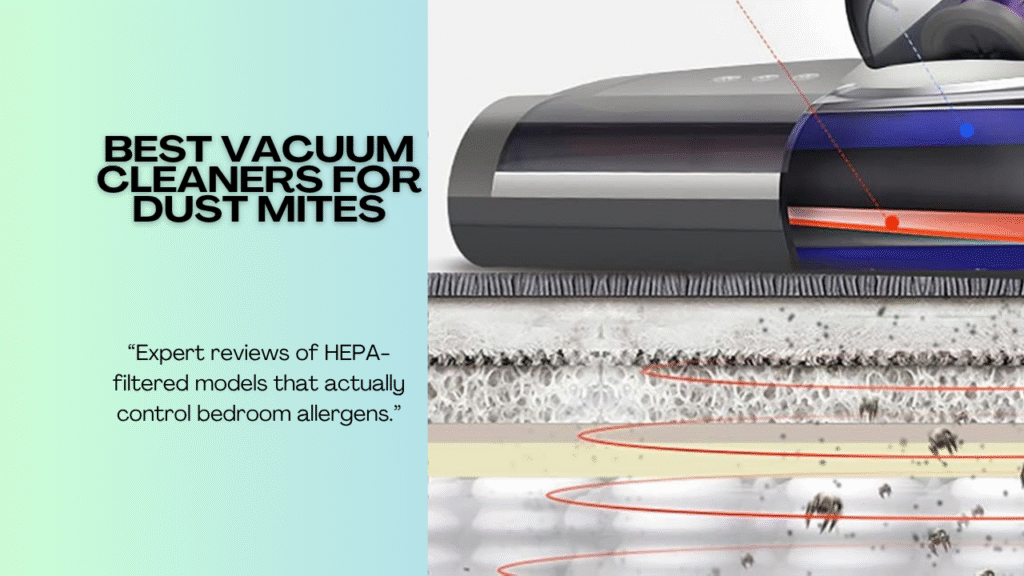Table of Contents
I still remember the day I bought my first cordless vacuum. I was so excited about the freedom of no cord. Then reality hit, the battery died halfway through cleaning my living room. Frustrating doesn’t even begin to cover it. But here’s the twist: I wouldn’t go back to a corded vacuum now. Why? Because I finally learned how to choose between cordless and corded vacuum cleaners based on my actual needs.
This decision matters more than you might think. Get it wrong, and you’ll spend years being annoyed every time you clean. Maybe you’re constantly hunting for outlets with a corded model. Or perhaps you’re frustrated by a cordless vacuum that can’t finish the job. Either way, it’s not fun.
The good news? This doesn’t have to be complicated. I’m going to walk you through everything you need to know. We’ll cover the real-world pros and cons of each type. I’ll share insights from testing dozens of models. More importantly, I’ll help you figure out which type fits your specific situation.
Think of this as advice from a friend who’s made all the mistakes already. By the end of this guide, you’ll know exactly whether cordless or corded is right for you. No marketing hype, no confusing jargon – just honest, practical guidance. Let’s dive in and solve this puzzle together.
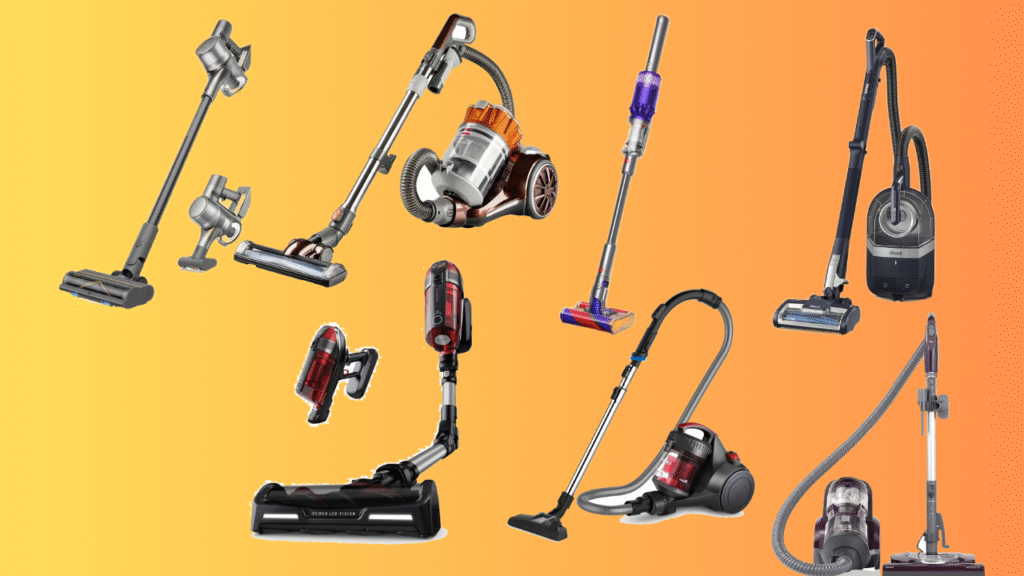
Understanding Your Cleaning Needs
Before we compare cordless and corded vacuums, let’s talk about you. Your home’s characteristics largely determine which type works better. This is where most people start making mistakes.
Home Size and Layout Considerations
How big is your space? This is crucial for the cordless vs corded debate. Small apartments under 1,000 square feet are perfect for cordless vacuums. You can clean everything on a single charge. Larger homes over 2,000 square feet? That’s where cordless models start struggling.
Layout matters too. Do you have multiple rooms spread across different floors? Cordless vacuums shine here. You’re not dragging a cord up and down stairs. Open-plan spaces work well with either type. However, corded vacuums give you unlimited runtime for bigger areas.
How many electrical outlets do you have? Sounds silly, but this affects corded vacuum convenience. Older homes often have fewer outlets. You’ll spend time unplugging and moving around. Modern homes with outlets everywhere make corded models more practical.
Floor Types You Have
Your flooring influences which vacuum type performs better. Hard floors like wood, laminate, and tile are easy for both types. Cordless vacuums actually excel here. They’re quick and convenient for surface cleaning.
Thick carpets change the equation dramatically. Deep carpet cleaning demands more power. Corded vacuums typically provide stronger, more consistent suction. Cordless models work on carpet but drain batteries faster. High-pile carpets especially challenge cordless technology.
Mixed flooring is common in most homes. You’ve got carpet in bedrooms and hardwood in living areas. Both vacuum types handle this fine. However, cordless models transition between floors more easily. No cord catching on transitions or doorways.
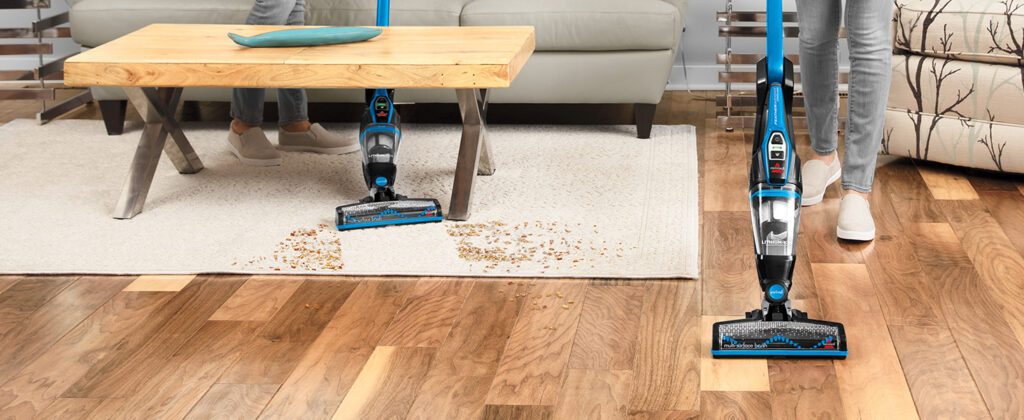
Specific Challenges
Do you have pets? Pet hair is demanding. It requires consistent, strong suction. Corded vacuums maintain power throughout cleaning. Cordless models might lose suction as batteries drain. That said, modern cordless technology is improving rapidly.
Allergies in the household? Both types can have HEPA filtration. The difference is runtime. Thorough allergy cleaning takes time. Corded vacuums let you work as long as needed. Cordless models might require multiple charging sessions.
Kids and daily messes favor cordless convenience. Quick spill clean-ups are effortless. Just grab it and go. No unwinding cords or finding outlets. For deep weekly cleans, corded might still be better.
The Cordless Vacuum: Pros and Cons
Let me break down cordless vacuums honestly. I’ve tested dozens of them. They’re not perfect, but they’ve improved dramatically in recent years.
The Major Advantages
Freedom of movement is the biggest win. You’re not tethered to outlets. You can vacuum anywhere without planning your route. This sounds minor until you experience it. Then you’ll understand why people love cordless.
Convenience for quick clean-ups is unmatched. Someone spilled cereal? Grab the vacuum and done. No setup, no hassle. This convenience changes your cleaning habits. You vacuum more often because it’s easy.
Storage is simpler with cordless models. Most mount on walls. They take up minimal space. No more shoving a bulky vacuum into a crowded closet. Your vacuum becomes almost invisible when not in use.
Lighter weight makes them easier to handle. Most cordless vacuums weigh under 7 pounds. You can carry them upstairs effortlessly. Cleaning above-floor surfaces becomes simple. Stairs, furniture, car interiors – all easy.
Multi-floor homes benefit enormously. Moving between floors with a corded vacuum is annoying. You’re carrying a heavy machine while managing a long cord. Cordless eliminates this completely. Each floor gets cleaned without the hassle.
The Real Downsides
Battery life limitations are the biggest issue. Most cordless vacuums run 20-40 minutes on high power. That’s enough for small to medium homes. Large homes might need multiple sessions. This can be frustrating when you’re in cleaning mode.
Power consistency decreases as batteries drain. Unlike corded models, suction weakens gradually. The first 10 minutes are great. The last 10 minutes? Not so much. Some newer models maintain power better.
Battery degradation over time is inevitable. After 2-3 years, runtime decreases noticeably. Eventually, you’ll need a replacement battery. These cost £50-£100. Factor this into your total ownership cost.
Upfront costs are higher for equivalent performance. A cordless vacuum with similar power to a £200 corded model? Expect to pay £300-£400. You’re paying for the battery technology. Decide if the convenience justifies the premium.
Dust capacity tends to be smaller. Cordless vacuums are lighter, which means smaller bins. You’ll empty them more frequently. Not a huge deal, but worth considering.

The Corded Vacuum: Pros and Cons
Now let’s talk about traditional corded vacuums. They’re not outdated technology. Many situations still favor corded models.
The Major Advantages
Unlimited runtime is the obvious benefit. Clean for as long as needed. Large homes? No problem. Deep cleaning sessions? Go for it. You’re never watching a battery indicator anxiously.
Consistent power throughout cleaning is huge. Suction doesn’t diminish. The last room gets the same performance as the first. This matters for thorough cleaning. Especially on thick carpets or heavy pet hair.
Generally more powerful motors are possible. Without battery weight constraints, manufacturers build stronger motors. This translates to better deep-cleaning performance. Particularly noticeable on carpets and upholstery.
Lower purchase price for equivalent performance. A quality corded vacuum costs £150-£250. A comparable cordless model? £300-£400. That’s significant savings. Budget shoppers appreciate this difference.
No battery replacement costs over time. Your vacuum works the same in year five as year one. Well, assuming you maintain it properly. No degrading performance or expensive battery purchases.
Larger dust capacities are common. Corded vacuums aren’t constrained by weight. Bigger bins mean less frequent emptying. Large homes particularly benefit from this feature.
The Real Downsides
Cord management is genuinely annoying. You’re constantly dealing with it. Unwinding before cleaning, rewinding after. Moving between rooms means unplugging and replugging. It breaks your workflow.
Limited radius means planning your route. Most cords are 25-30 feet. Add the hose, and you get about 40 feet total. Still, you’ll switch outlets multiple times. Large homes multiply this frustration.
Heavier and bulkier than cordless models. Most corded vacuums weigh 12-18 pounds. That’s double a cordless model. Carrying upstairs? More challenging. Maneuvering? Less nimble.
Storage requires more space. You need a decent-sized closet. Plus somewhere to wrap or store the cord. In small homes, this matters. Your vacuum becomes a space hog.
Stairs and tight spaces are problematic. The cord catches on corners. You’re dragging weight behind you. Cleaning stairs with a corded upright? That’s a workout.
Understanding Battery Technology (Cordless)
If you’re considering cordless, understanding batteries is essential. This knowledge prevents disappointment and helps you make smarter choices.
Lithium-Ion Battery Basics
Modern cordless vacuums use lithium-ion batteries. These are the same technology in your phone and laptop. They’re lightweight and powerful. However, they have limitations.
Voltage affects power, not runtime. You’ll see 18V, 25V, or even 40V batteries advertised. Higher voltage can mean more power. But it doesn’t necessarily mean longer runtime. Don’t confuse the two metrics.
Capacity, measured in amp-hours (Ah), determines runtime. A 3,000mAh battery lasts longer than 2,000mAh. However, manufacturers don’t always advertise this spec. Focus on real-world runtime reviews instead.

Real-World Runtime Expectations
Marketing claims are misleading. Manufacturers test on eco mode with no load. Real-world performance is different. High-power mode on carpet? Expect 15-30 minutes maximum.
Floor type dramatically affects runtime. Hard floors require less power. You might get 40-50 minutes. Thick carpets drain batteries in 15-20 minutes. Plan your cleaning accordingly.
Removable batteries are a game-changer. Some models include two batteries. Clean for 30 minutes, swap batteries, continue cleaning. This solves the runtime problem. It also costs more upfront.
Battery Care and Lifespan
Lithium-ion batteries degrade over time. Expect 500-1,000 charge cycles before noticeable decline. That’s 2-4 years for most users. The Battery University provides detailed guidance on maximizing battery lifespan.
Temperature affects performance and longevity. Don’t store your vacuum in extreme heat or cold. Garages in summer or winter aren’t ideal. Keep it at room temperature.
Partial charges are better than full cycles. Modern batteries don’t need complete discharge. In fact, that harms them. Charge when convenient, not just when empty.
Understanding Power Delivery (Corded)
Corded vacuums have their own technical considerations. Understanding these helps you choose the right model.
Motor Power and Suction
Watts don’t tell the whole story. A 1200W motor isn’t necessarily better than 800W. Efficiency and design matter more. Look for air watts instead. This measures actual suction power.
Modern corded vacuums are surprisingly efficient. Energy regulations in the UK and EU limit motor wattage. Manufacturers improved efficiency to maintain performance. Today’s 900W motor often outperforms yesterday’s 2000W beast.
Sealed systems matter more than raw power. Air leaks waste suction. The best vacuums seal the entire airflow path. This maximizes the motor’s effectiveness.
Cord Length Considerations
Longer isn’t always better. A 40-foot cord sounds great. But rewinding 40 feet gets tedious. And you’re dragging all that cord around. 25-30 feet is the sweet spot.
Automatic cord rewind is worth it. Press a button, the cord disappears. Models without this feature? You’re wrapping manually. That gets old fast.
Cord storage design matters. Some vacuums have clever cord wraps. Others just have hooks. Consider how you’ll actually use this feature.
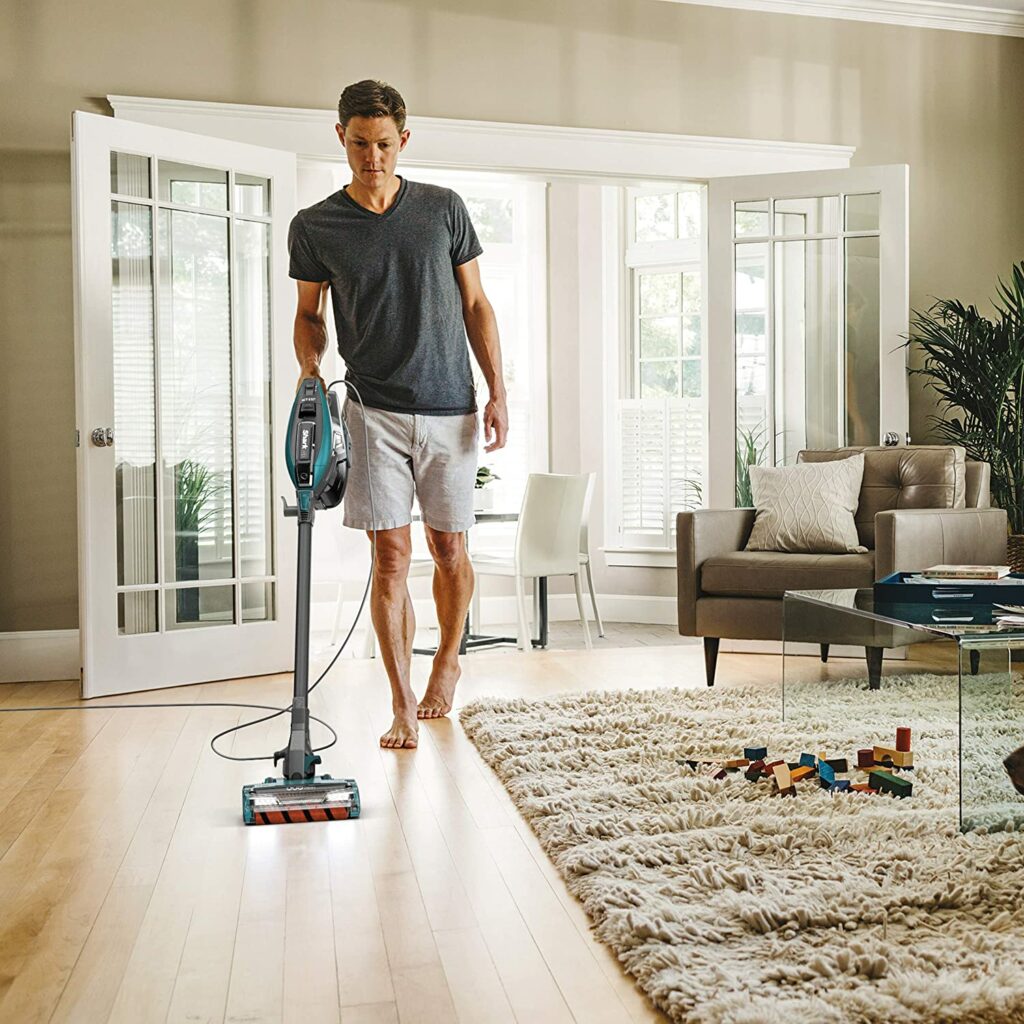
Performance Comparison: Cordless vs Corded
Let’s compare actual cleaning performance. This is where the rubber meets the road.
Carpet Cleaning Performance
Corded vacuums generally win on deep carpet cleaning. They maintain consistent, powerful suction. This agitates carpet fibers better. Embedded dirt and pet hair come up more easily.
High-end cordless models are catching up. Premium cordless vacuums now rival mid-range corded performance. But expect to pay £400+ for this capability. Budget cordless models still lag behind.
Brush roll technology matters more than power source. Self-adjusting brush rolls work on both types. Anti-tangle designs prevent hair wrap-up. Focus on these features regardless of cord status.
Hard Floor Cleaning Performance
Both types excel on hard floors. Honestly, it’s nearly a tie. Cordless models are slightly more convenient. But corded models clean just as well.
The key is avoiding scratches. Both types can damage floors if poorly designed. Look for soft wheels and gentle brush rolls. Turn off the brush for bare floors.
Debris pickup is excellent on both. Dirt, dust, and crumbs disappear easily. Hard floors don’t demand the power that carpets require.
Pet Hair Removal
This is where corded vacuums edge ahead. Pet hair requires sustained, powerful suction. Cordless models work fine initially. But as batteries drain, effectiveness decreases.
Specialized pet tools help both types. Motorized brush heads for upholstery are game-changers. These work on both corded and cordless models. For our recommended pet hair vacuums, check out our best battery vacuum cleaners guide for cordless options.
Multiple pet households might prefer corded. You can clean thoroughly without time pressure. No worrying about battery life mid-session.
Allergen and Dust Management
HEPA filtration is available on both types. The filtration quality isn’t determined by power source. Look for sealed systems with certified HEPA filters.
Thorough allergen cleaning takes time. Corded vacuums let you work methodically. Cordless models might rush you. This could leave allergens behind.
Dust bin emptying is messier on bagless models. This affects both cordless and corded. If allergies are severe, consider bagged options.
Our best bagged canister vacuums review covers excellent allergen-sealed options.
Cost Analysis: Total Ownership
Let’s talk money honestly. The purchase price is just the beginning.
Initial Purchase Costs
Budget cordless vacuums start around £150. However, performance at this price is mediocre. Expect £250-£400 for quality cordless models. Premium options exceed £600.
Budget corded vacuums start around £80. Decent models range £120-£250. Excellent corded vacuums rarely exceed £400. You get more power per pound spent.
The price gap narrows at the premium end. A £500 cordless and £500 corded both offer excellent performance. The difference is convenience versus runtime.
Ongoing Operating Costs
Corded vacuums have minimal ongoing costs. Replace filters annually (£10-£20). Replace bags if applicable (£20-£30 yearly). That’s it.
Cordless vacuums add battery replacement. After 2-4 years, batteries degrade significantly. Replacement costs £50-£100. Some manufacturers charge even more.
Both types might need brush roll replacements. Worn bristles reduce effectiveness. These cost £15-£30. Frequency depends on usage.
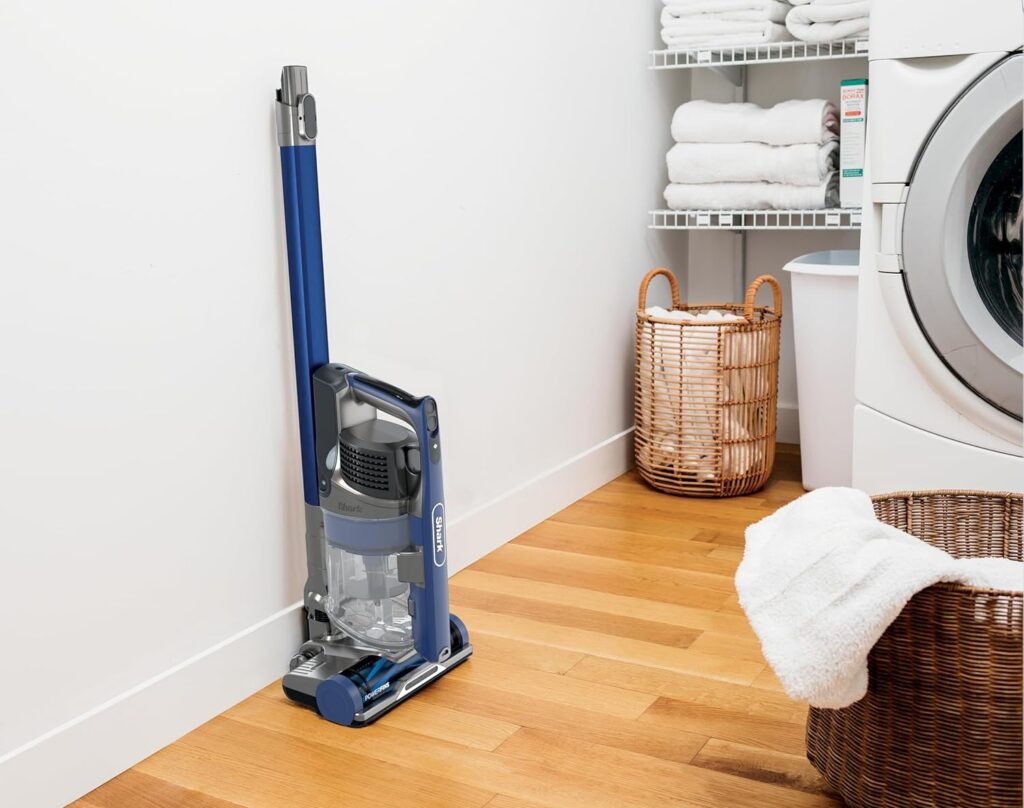
Long-Term Value Calculation
Let’s calculate 5-year ownership costs. Budget corded vacuum: £150 purchase + £100 maintenance = £250 total. Mid-range cordless: £350 purchase + £100 maintenance + £80 battery = £530 total.
The convenience premium for cordless is about £280 over five years. That’s roughly £56 annually. Decide if the freedom from cords justifies this cost.
Premium cordless models cost even more long-term. A £600 cordless plus battery replacement? You’re at £780 total. Compare this to a £300 premium corded vacuum.
Budget constraints favor corded models. You get excellent performance for less money. The trade-off is convenience and storage space.
Practical Use Cases: Which Type Wins?
Let’s examine real-world scenarios. This clarifies which type suits different situations.
Small Apartments and Studio Flats
Cordless vacuums dominate here. Limited space makes storage crucial. Wall-mounted cordless models disappear. Runtime isn’t an issue with smaller areas.
Quick cleanups happen more often. The convenience encourages regular vacuuming. Your home stays cleaner with less effort.
Limited outlets in older flats? Another cordless advantage. No hunting for outlets or managing cords. Just grab and clean.
Large Family Homes
This is where it gets complicated. Corded vacuums offer unlimited runtime. Large areas demand this. However, multiple floors favor cordless convenience.
Consider a hybrid approach. A powerful corded vacuum for thorough weekly cleans. A cordless for daily touch-ups and spills. This combination works brilliantly.
Budget might determine your choice. Can’t afford both? A quality corded vacuum handles everything. It just requires more effort.
Multi-Story Homes
Cordless vacuums are nearly essential here. Carrying a corded vacuum up and down stairs is exhausting. Plus managing that cord on stairs? Frustrating.
One cordless vacuum can handle all floors. Move freely between levels. No cord catching on banisters or steps.
Battery life might limit you. Clean one floor per charge. This adds time to your routine. But it’s still easier than dragging a corded model.
Homes with Mostly Hard Floors
Either type works wonderfully. Hard floors don’t demand maximum power. Cordless convenience makes sense here. Cleaning is quick and easy.
Corded models still work great. Just more hassle with the cord. If you already own one, no need to switch.
Robot vacuums also shine on hard floors. They handle daily maintenance. Add a cordless for spots and edges. Perfect combination.
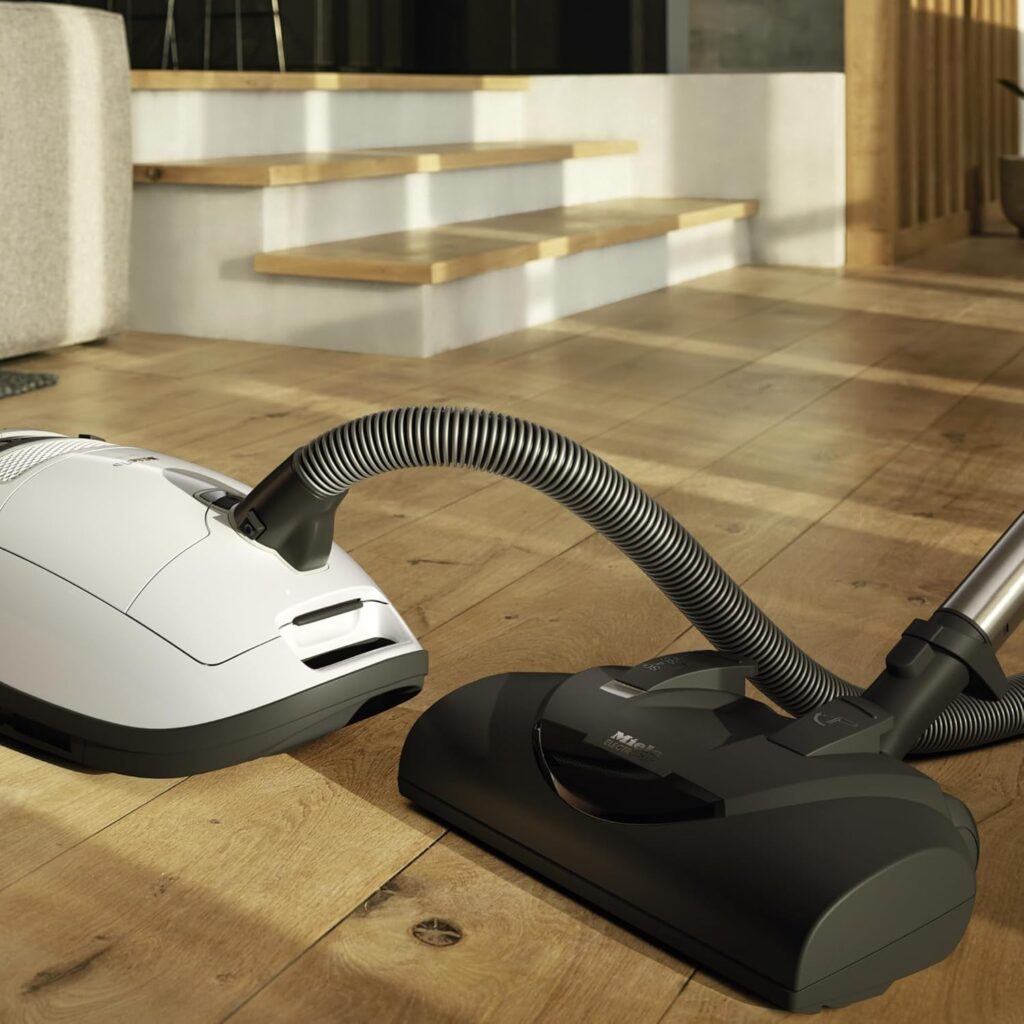
Carpet-Heavy Homes
Corded vacuums typically perform better here. Deep carpet cleaning needs sustained power. Batteries drain quickly on thick carpet.
If choosing cordless, invest in premium models. Look for high voltage and large battery capacity. Budget cordless struggles on heavy carpet.
Check out our 10 best upright vacuum cleaners guide for powerful corded options perfect for carpet-heavy homes
Homes with Pets
Pet owners face unique challenges. Hair accumulates quickly. Daily cleaning is necessary. Cordless convenience encourages this routine.
However, thorough pet hair removal needs power. Corded vacuums provide this consistently. Again, a hybrid approach works well.
Consider vacuum type, then add pet-specific tools. Motorized brush heads and crevice tools help tremendously. These matter more than cord status.
Storage and Convenience Factors
Daily usability affects your satisfaction long-term. These practical factors matter more than you’d think.
Storage Solutions
Cordless vacuums win on storage. Wall mounts take minimal space. Your vacuum hangs out of sight. Small homes benefit enormously.
Corded uprights need closet space. They’re bulky and have that cord. You need 2-3 square feet of floor space. Plus somewhere for attachments.
Corded canister vacuums are even worse. The canister, hose, and wand need storing. They’re awkward to organize. Consider where it’ll live before buying.
Grab-and-Go Factor
How quickly can you start cleaning? Cordless wins decisively. It’s always charged and ready. Grab it and go.
Corded vacuums require setup. Unwinding the cord, finding an outlet, plugging in. Maybe 30-60 seconds total. Sounds minor, but it affects usage.
This convenience difference influences behavior. Easier vacuums get used more often. Your home stays cleaner overall.
Post-Cleaning Cleanup
Emptying dust bins takes time on both types. Cordless bins are smaller, so more frequent. Corded bins are bigger but heavier when full.
Cord storage on corded models adds time. Manual winding is tedious. Automatic rewind helps significantly.
Maintenance like filter cleaning applies to both. This isn’t a deciding factor between types.
Environmental Considerations
Let’s talk sustainability. This matters to many people choosing vacuum types.
Energy Consumption
Corded vacuums use electricity while running. Modern models are efficient, typically 700-900W. A 30-minute cleaning session uses about 0.5 kWh. That’s roughly 15p per cleaning.
Cordless vacuums charge their batteries. A full charge uses about 0.2-0.3 kWh. That’s about 6-9p per charge. Seems cheaper initially.
However, battery production has environmental costs. Mining lithium and manufacturing batteries require significant energy. The Environmental Protection Agency’s battery recycling page explains proper disposal and environmental impacts.
Product Lifespan and Waste
Corded vacuums typically last longer. Without batteries to degrade, they function for 10+ years. Longer lifespan means less waste.
Cordless vacuum batteries limit product life. After 4-5 years, battery replacement costs rival buying new. Many people just replace the whole unit. This creates more e-waste.
Repairability favors corded models. They’re simpler mechanically. Parts are easier to replace. Cordless models integrate batteries tightly, complicating repairs.
Recycling and Disposal
Both vacuum types eventually need disposal. Metal and plastic components recycle similarly. The difference is battery disposal.
Lithium-ion batteries require special recycling. Don’t throw them in regular trash. Find proper recycling facilities. Many retailers accept old batteries.
Manufacturers’ take-back programs help. Some brands accept old vacuums for recycling. Check if your chosen brand offers this.
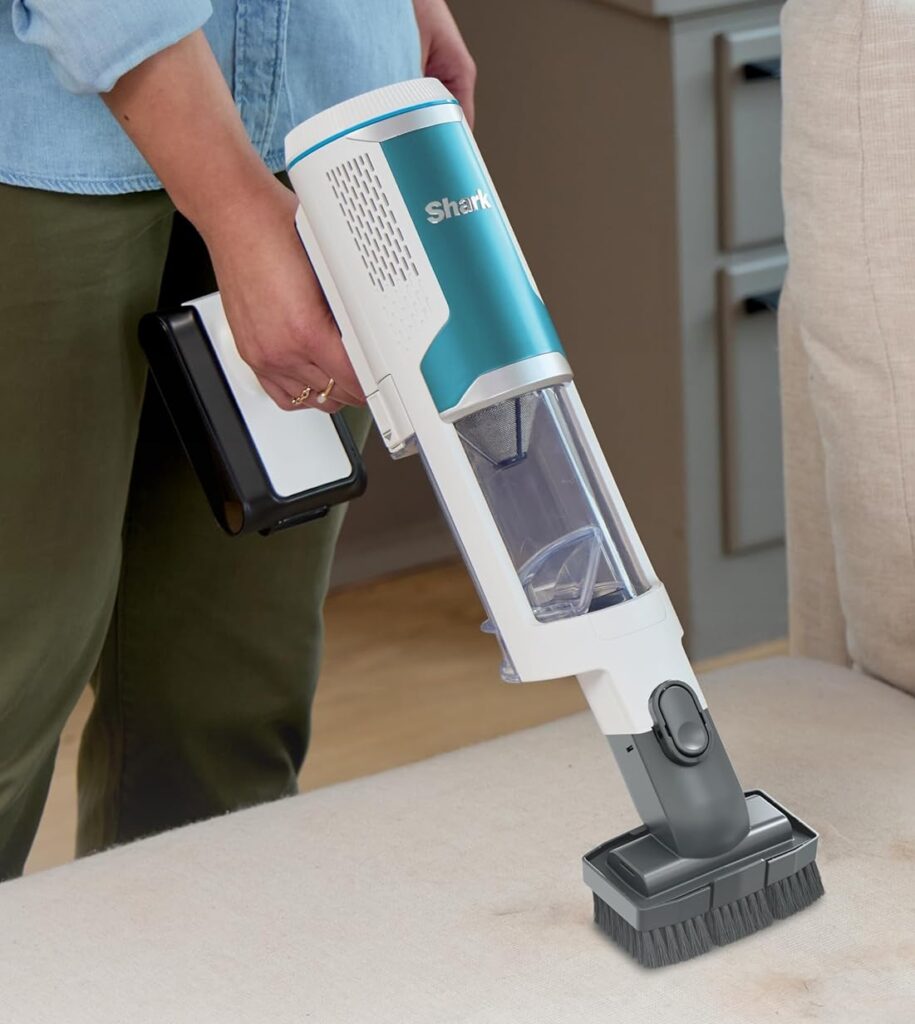
Making Your Final Decision
You’ve absorbed tons of information. Now let’s convert that into a clear decision.
The Cordless Vacuum Is Right for You If:
Your home is under 1,500 square feet. Battery life handles this comfortably. You won’t feel limited.
You have multiple floors or stairs. The convenience factor is massive here. Cordless transforms multi-level cleaning.
Quick daily cleanups matter more than deep weekly cleans. Cordless encourages regular vacuuming. Your home stays consistently cleaner.
Storage space is limited. Small flats and apartments benefit enormously. Wall mounting saves precious space.
You have mostly hard floors or low-pile carpet. These surfaces don’t drain batteries quickly. Performance remains excellent.
Budget allows £250-£400 for quality performance. Cheaper cordless models disappoint. Invest properly or choose corded.
The Corded Vacuum Is Right for You If:
Your home exceeds 2,000 square feet. Unlimited runtime becomes essential. Battery anxiety disappears.
You have thick carpets or lots of pet hair. Sustained power makes deep cleaning easier. Performance doesn’t diminish mid-session.
Budget is tight (under £200). Corded models deliver better value. You sacrifice convenience, not cleaning ability.
You clean thoroughly once or twice weekly. Long sessions benefit from unlimited runtime. No interruptions for recharging.
You have single-level living spaces. Cord management is easier without stairs. The main cordless advantage disappears.
You plan to keep your vacuum 5+ years. No battery replacement costs. Same performance throughout ownership.
Questions to Ask Yourself
How often do you vacuum? Daily quick-cleaners favor cordless. Weekly deep-cleaners favor corded.
What frustrates you about current cleaning? Cord tangles? Choose cordless. Weak suction? Choose corded.
What’s your physical capability? Lighter cordless models are easier to handle. Heavy corded models cause fatigue.
Where will you store it? Answer this before buying. Make sure it fits your reality.
What’s your total budget? Include potential battery replacement for cordless. Calculate 5-year ownership costs.
Common Mistakes to Avoid
I’ve seen people make these errors repeatedly. Learn from their experiences.
Choosing Based on Trends Alone
Cordless vacuums are trendy. Everyone raves about them. But trends don’t determine your needs. Your home’s specific requirements matter more.
Don’t buy cordless just because it’s popular. Evaluate if it actually solves your problems. Otherwise, you’ve wasted money on inconvenient convenience.
Ignoring Runtime Reality
Marketing claims are wildly optimistic. Manufacturers test in ideal conditions. Real-world runtime is 30-50% less.
Test your home’s vacuum time. Use your current vacuum and time it. If it takes 25 minutes, a 30-minute cordless barely works. Be honest about needs.
Underestimating Battery Costs
Replacement batteries are expensive. People forget this when comparing prices. A £300 cordless plus £80 battery equals £380 real cost.
Factor in at least one battery replacement over ownership. This gives a fairer price comparison with corded models.
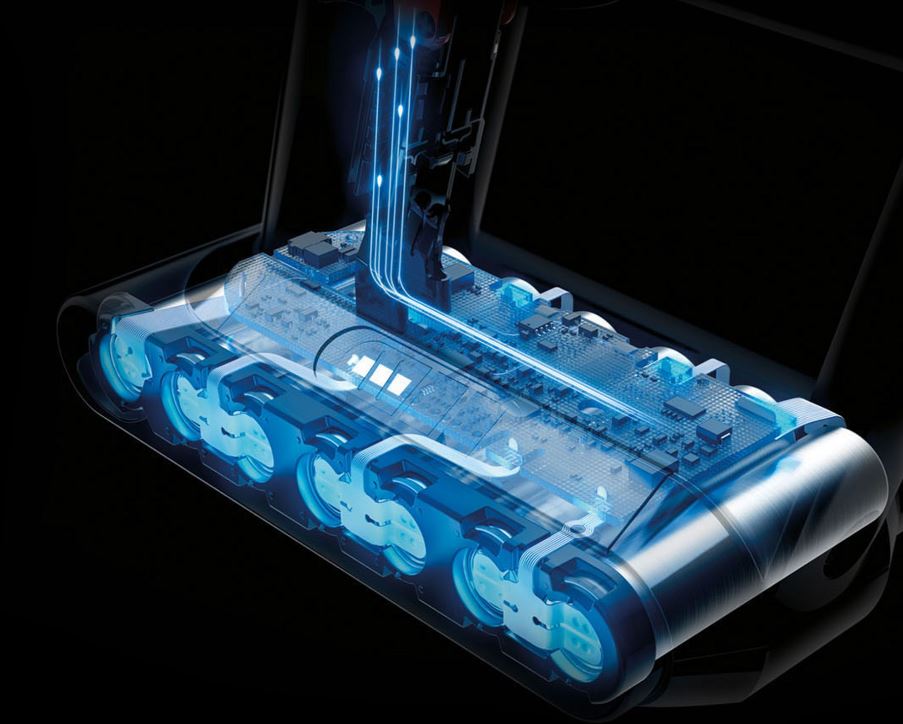
Buying the Cheapest Option
Budget cordless vacuums under £150 mostly disappoint. Weak suction, terrible battery life, poor build quality. You’ll regret it quickly.
If budget is tight, buy a quality corded vacuum instead. £150 buys an excellent corded model. It buys a mediocre cordless one.
Not Testing Weight and Handling
Specifications list weight in pounds. But how it feels matters more. A well-balanced 7-pound vacuum feels lighter than a poorly designed 6-pound one.
Visit a store and handle models if possible. Lift them, push them, carry them. Your arms and back will thank you.
Forgetting About Attachments
The main vacuum is just part of the system. Attachments extend functionality enormously. Both corded and cordless models offer these.
Ensure attachments work with your chosen type. Some cordless models lose power with attachments. This defeats the purpose.
Our Top Recommendations
After testing dozens of models, here are my suggestions based on different needs and budgets.
Best Cordless for Small to Medium Homes
Look for models with 30-40 minute runtime on standard mode. Removable batteries are a huge plus. Wall-mounted charging keeps things tidy.
Expect to spend £280-£400 for reliable performance. Cheaper options work but with limitations. This price range balances features and quality well.
Key features: motorized brush head, multiple power modes, washable filters. These ensure versatility and low operating costs.
For detailed cordless recommendations, check our best battery vacuum cleaners guide where we test and rank the top cordless models
Best Corded for Large Homes
Powerful upright vacuums dominate here. Look for models with adjustable suction and brush roll control. Automatic cord rewind saves hassle.
Budget £200-£350 for excellent performance. You get large dust capacity and powerful motors. These handle whole-house cleaning effortlessly.
HEPA filtration is worth prioritizing. Sealed systems trap allergens effectively. Your air quality improves alongside floor cleanliness.
Visit our 10 best upright vacuum cleaners guide for comprehensive reviews of the top corded models.
Best Bagged Option for Allergen Control
Bagged canister vacuums offer superior allergen containment. Dust doesn’t escape during emptying. This matters significantly for allergy sufferers.
These come in both corded and cordless. Corded dominates this category traditionally. Expect to pay £250-£500 for top-tier options.

Our best bagged canister vacuums review covers the most effective models for allergy and asthma management
Best Budget Corded Option
Don’t dismiss budget corded vacuums. Several excellent models cost £120-£180. They offer solid performance without fancy features.
Look for models from established brands. Warranty coverage is essential at this price. Avoid unknown brands with suspicious reviews.
Expect good carpet and hard floor performance. Don’t expect premium features like LED lights or app connectivity.
Best Hybrid Approach
Many households benefit from owning both types. A powerful corded upright for weekly deep cleans. A lightweight cordless for daily maintenance.
Total investment: £400-£600 for both. This sounds expensive initially. But you get the best of both worlds. Your cleaning routine becomes efficient and thorough.
The cordless handles spills and quick cleanups. The corded tackles deep cleaning sessions. Together, they keep your home spotless.
Frequently Asked Questions
How long do cordless vacuum batteries really last?
Real-world cordless runtime is 15-40 minutes depending on power mode and floor type. High power on carpet drains batteries in 15-20 minutes. Eco mode on hard floors might last 50-60 minutes. Marketing claims often use eco mode with no load.
Are cordless vacuums as powerful as corded?
Premium cordless models (£400+) match mid-range corded performance. Budget cordless vacuums (under £200) lag behind significantly. For equivalent power to a £200 corded vacuum, expect to spend £350-£400 on cordless.
What happens when a cordless vacuum battery dies?
You can purchase replacement batteries from manufacturers. These typically cost £50-£100. Some brands make this easy, others don’t sell batteries separately. Check replacement battery availability before purchasing.
Do corded vacuums last longer than cordless?
Generally yes. Without batteries to degrade, corded vacuums often last 10+ years. Cordless vacuums typically last 4-6 years before battery replacement becomes necessary. However, modern cordless technology is improving longevity.
Can I use a cordless vacuum for whole-house cleaning?
Depends on home size. Homes under 1,500 square feet usually clean on one charge. Larger homes might need multiple charges or battery swaps. Removable spare batteries solve this problem but add cost.
Which type is better for stairs?
Cordless vacuums excel on stairs. They’re lighter and have no cord to manage. Cleaning stairs with a corded vacuum is awkward and tiring. This is one area where cordless clearly wins.
Are robot vacuums an alternative to both?
Robot vacuums handle maintenance cleaning brilliantly. However, they can’t replace manual vacuuming entirely. They miss corners, struggle with thick carpets, and can’t clean upholstery. Consider them as supplementary, not replacement.
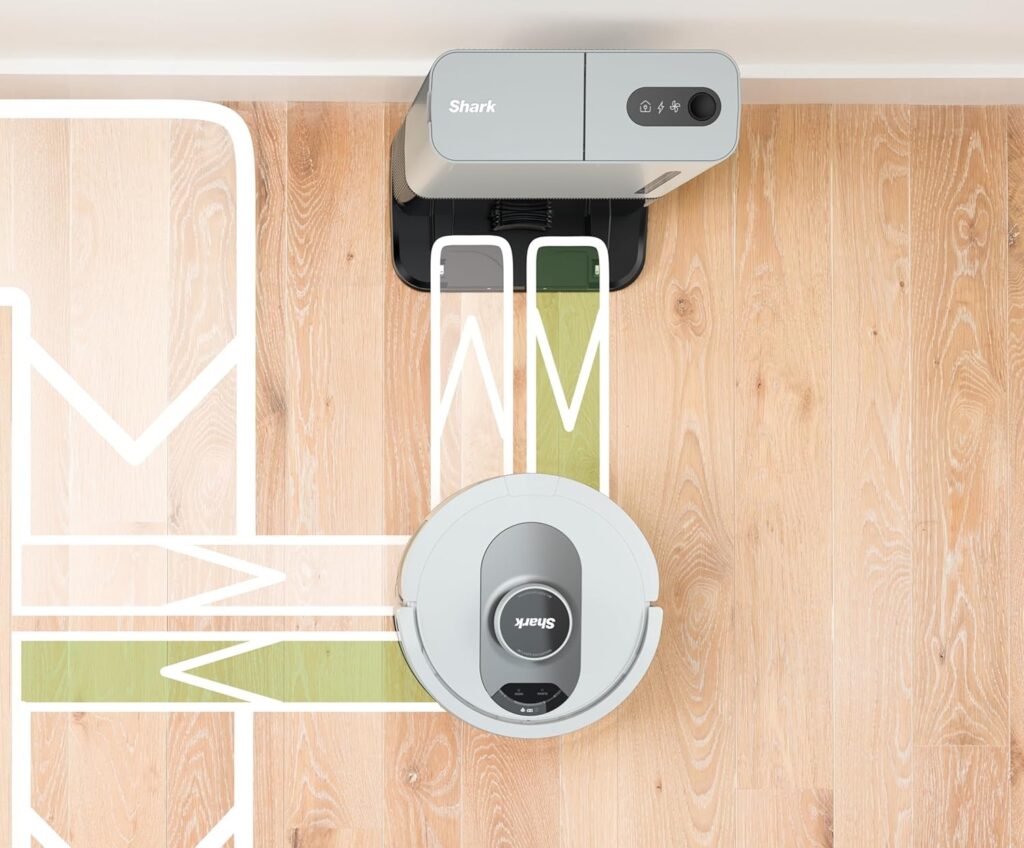
Conclusion On How to Choose Between Cordless and Corded Vacuum Cleaners
Choosing between cordless and corded vacuum cleaners comes down to understanding your priorities. Both types excel in different situations. There’s no universally “best” choice.
Cordless vacuums offer unmatched convenience. They’re perfect for multi-level homes, quick cleanups, and limited storage. The freedom from cords transforms your cleaning routine. However, you’ll pay more upfront and face eventual battery costs.
Corded vacuums provide unlimited runtime and consistent power. They’re ideal for large homes, thick carpets, and budget-conscious buyers. The cord requires management, but performance never wavers. For deep cleaning sessions, they remain unbeaten.
Consider your home’s size, layout, and flooring. Think about your cleaning frequency and habits. Evaluate your budget honestly, including long-term costs. These factors guide you toward the right choice.
Many households benefit from owning both types. A cordless for daily maintenance, a corded for weekly deep cleans. This hybrid approach maximizes cleaning efficiency. Your home stays consistently clean with minimal frustration.
Don’t rush this decision. Visit stores and handle different models. Read reviews from people with similar homes. Your vacuum will be part of your life for years. Choose wisely, and cleaning becomes easier, not more frustrating.
Feeling more confident about how to choose between cordless and corded vacuum cleaners? Ready to make your choice? Explore our detailed guides linked throughout this article. We’ve tested and ranked the best models in each category. Your perfect vacuum is waiting.

